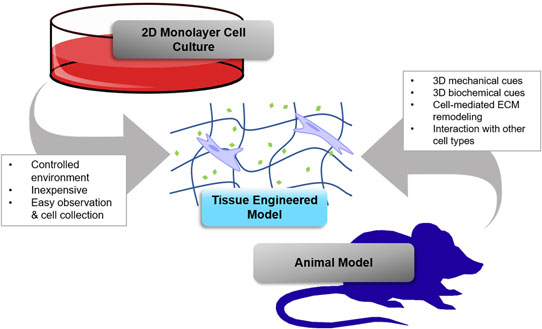Crossref Citations
This article has been cited by the following publications. This list is generated based on data provided by
Crossref.
Sawicki, Lisa A.
Ovadia, Elisa M.
Pradhan, Lina
Cowart, Julie E.
Ross, Karen E.
Wu, Cathy H.
and
Kloxin, April M.
2019.
Tunable synthetic extracellular matrices to investigate breast cancer response to biophysical and biochemical cues.
APL Bioengineering,
Vol. 3,
Issue. 1,
Ovadia, Elisa M.
Pradhan, Lina
Sawicki, Lisa A.
Cowart, Julie E.
Huber, Rebecca E.
Polson, Shawn W.
Chen, Chuming
van Golen, Kenneth L.
Ross, Karen E.
Wu, Cathy H.
and
Kloxin, April M.
2020.
Understanding ER+ Breast Cancer Dormancy Using Bioinspired Synthetic Matrices for Long‐Term 3D Culture and Insights into Late Recurrence.
Advanced Biosystems,
Vol. 4,
Issue. 9,
Hassani, Iman
Anbiah, Benjamin
Kuhlers, Peyton
Habbit, Nicole L
Ahmed, Bulbul
Heslin, Martin J
Mobley, James A
Greene, Michael W
and
Lipke, Elizabeth A
2022.
Engineered colorectal cancer tissue recapitulates key attributes of a patient-derived xenograft tumor line.
Biofabrication,
Vol. 14,
Issue. 4,
p.
045001.
Antunes, Nina
Kundu, Banani
Kundu, Subhas C.
Reis, Rui L.
and
Correlo, Vítor
2022.
In Vitro Cancer Models: A Closer Look at Limitations on Translation.
Bioengineering,
Vol. 9,
Issue. 4,
p.
166.
Cieśluk, Mateusz
Piktel, Ewelina
Wnorowska, Urszula
Skłodowski, Karol
Kochanowicz, Jan
Kułakowska, Alina
Bucki, Robert
and
Pogoda, Katarzyna
2022.
Substrate viscosity impairs temozolomide-mediated inhibition of glioblastoma cells' growth.
Biochimica et Biophysica Acta (BBA) - Molecular Basis of Disease,
Vol. 1868,
Issue. 11,
p.
166513.
Hassani, Iman
Anbiah, Benjamin
Moore, Andrew L.
Abraham, Peter T.
Odeniyi, Ifeoluwa A.
Habbit, Nicole L.
Greene, Michael W.
and
Lipke, Elizabeth A.
2024.
Establishment of a tissue‐engineered colon cancer model for comparative analysis of cancer cell lines.
Journal of Biomedical Materials Research Part A,
Vol. 112,
Issue. 2,
p.
231.
